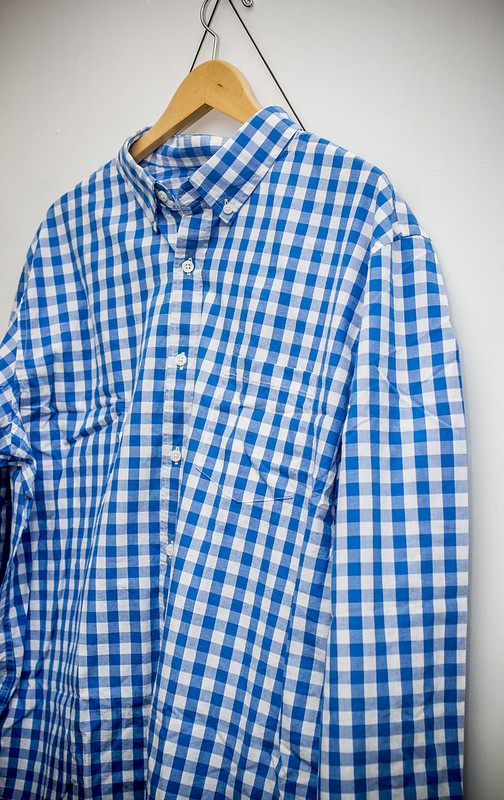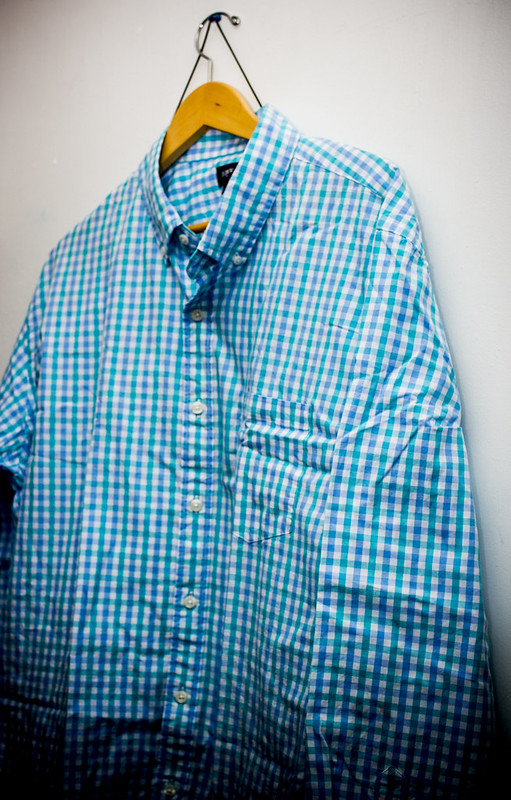I recently purchased a double gingham and a tattersall dress shirt from J. Crew.
A friend of mine asked me a question if both are gingham? Aside from the checkmarks, both are quite different.
Before I go into the differences, my apologies in advance if the clothes are a bit wrinkled as I just opened up the package just a while ago and quickly took a picture of the dress shirts.

Gingham is often debated if the name comes from Malaysia (“genggang” means striped in Malay), Indonesia or some other country. Gingham was first imported into Europe by the Dutch back in the 17th century and is a striped fabric. When it was produced in Manchester, England, the fabric was woven into checked or plaid patters with the common colors of blue and white.
Of course, gingham has been around and far often, working in the corporate setting, a lot of us are often wearing gingham, but that was not always the case for me.
In fact, I kept away from gingham for many years for the fact that a lot of other executives were wearing it and that pushed me further away, as I tend to not like to wear what everyone is typically wearing. That was until I saw how gingham was incorporated into Tokyo style years ago and it became more fitting style-wise for me to see how gingham was used.
In fact, Japanese are mass consumers of gingham, so it’s often you can see it on clothing, tabletops, towels, aprons and you even here it in music as evidence by these music videos by AKB48 (Akihabara 48 in Japan), JKT48 (Jakarta 48 in Indonesia) and SNH48 (Shanghai 48 in China):
But gingham is distinguished from the white colored and even checks which are horizontal and vertical.

As for Tattersall, you may be wondering… “they look the same?”.
Tattersall is a check or plaid pattern woven into cloth and feature regularly-spaced thing, even vertical stripes. The stripes feature two alternating colors and one darker when the two colors darker colors meet.
But as the J. Crew tattersall dress shirt above, it looks almost like the gingham shirt above.
But before I go into details, the word “tattersall” derives from Tattersall’s Horse Market, which began in London in 1766 and the horse market blankets with the pattern were used on horses.
The majority of the time, tattersall’s can be seen as thin stripes such as the photo above. But often, one can find tattersall dress shirts which will feature much bigger squares and thus, people tend to confuse tattersall for gingham. I noticed when there are two different colors, they immediately call the dress shirts tattersall, as gingham tends to be dark blue and light blue, dark red or light red, etc.
Now going back to gingham, often I am asked if I have a preference and truthfully, I own gingham in small checkered lines to larger. Personally, I look for colors that compliment the pants, socks and shoes that I am wearing. I also prefer gingham shirts that have a button on the collar.
But overall, I do recommend owning gingham and tattersall dress shirts and owning several of them for casual to professional dress wear.


